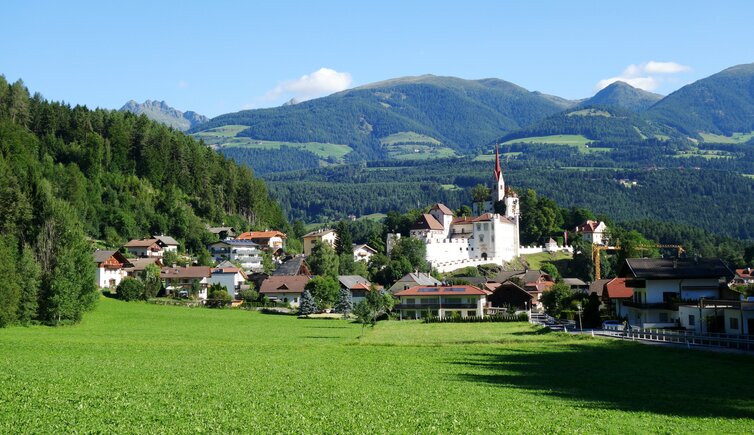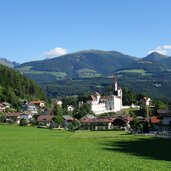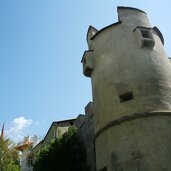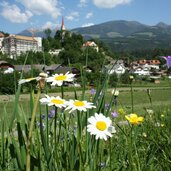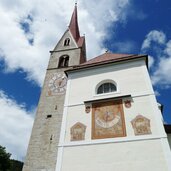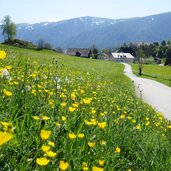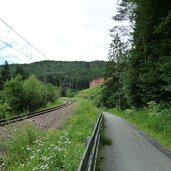Casteldarne Castle, the showpiece of the holiday village in the Val Pusteria, rises majestically above the roofs of Casteldarne
Image gallery: Casteldarne
Due to the construction of the Riggertal loop and safety-related works, sections of the Val Pusteria Railway will be closed until January 2026. A rail replacement bus service will be in operation.
The three main… read more
If you follow the road from Chienes towards Brunico, it branches off to the right to Casteldarne (Ehrenburg). The village at the foot of Mt. Monghezzo and its eponymous hamlet tells of bygone times with its Roman Milestone, which was discovered in 1928 in the west of the village, curiously walled into a rock wall, and with Casteldarne Castle, also known as Schloss Ehrenburg. The castle dates back to the 12th century and was owned by the Lords of Künigl for 700 years, becoming their ancestral seat before being sold only about a decade ago: Today it is in private hands.
You can extend your cultural walk to the Assumption of the Virgin Mary Parish Church, a Baroque building with an image by Joseph Adam Knight of Mölk. The famous Austrian fresco and panel painter is also responsible for magnificent works in the parish church of Hall in Tyrol and the ceiling painting in the most famous South Tyrolean place of pilgrimage, Madonna di Pietralba.
Numerous paths are perfect for a walk. From the quiet Casteldarne, located away from the traffic of the Val Pusteria, you can walk to the above-mentioned Casteldarne Milestone, which has been released from its wall and now towers 2 metres high along the Roman Path. It is an easy 1.5 hour hike between the main village of Chienes and Casteldarne, past traditional wooden fences and the old dry stone walls. In the other direction, a trail takes you through the green hilly landscape on the sunny side of the Val Pusteria to the picturesque locality of Castelbadia near San Lorenzo.
